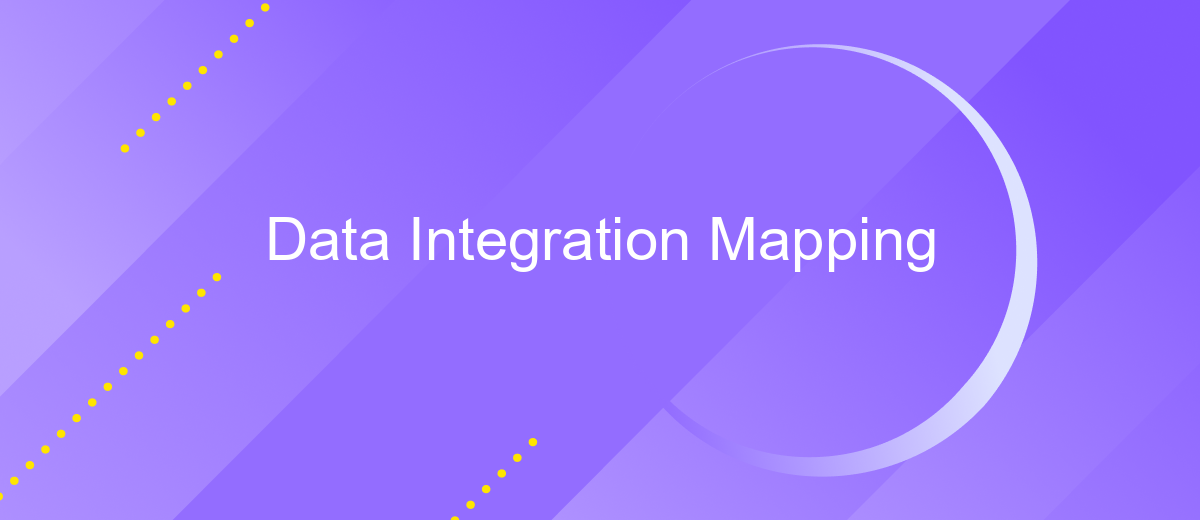Data Integration Mapping
Data integration mapping is a crucial process in modern data management, enabling the seamless merging of information from diverse sources into a unified view. This process ensures data consistency, accuracy, and accessibility, facilitating better decision-making and operational efficiency. In this article, we will explore the key concepts, techniques, and benefits of data integration mapping in today's data-driven world.
Introduction
Data integration mapping is a critical process in the realm of data management, where disparate data sources are combined to provide a unified view. This process ensures that data from different systems can be accessed, analyzed, and utilized efficiently. It serves as the backbone for various business operations, enabling seamless data flow and consistency across platforms.
- Ensures data consistency and accuracy
- Facilitates efficient data analysis
- Supports seamless data flow between systems
- Enhances decision-making processes
In today's data-driven world, the importance of effective data integration mapping cannot be overstated. As organizations continue to rely on diverse data sources, the ability to integrate and map this data accurately becomes paramount. By leveraging advanced tools and methodologies, businesses can ensure that their data integration efforts are both efficient and effective, ultimately leading to better insights and strategic decisions.
Data Mapping Tools

Data mapping tools are essential for transforming and integrating data from various sources into a unified format. These tools help in identifying the relationships and dependencies between different data elements, making it easier to merge and analyze data. They often come with features such as automated data mapping, visual mapping interfaces, and support for various data formats and standards. Popular data mapping tools include Talend, Informatica, and Microsoft SQL Server Integration Services (SSIS), which provide robust solutions for data integration and transformation tasks.
One notable service in the realm of data integration is ApiX-Drive. ApiX-Drive offers a user-friendly platform that allows businesses to automate data transfer between various applications without requiring extensive technical expertise. It supports a wide range of applications and provides intuitive mapping interfaces to ensure data is accurately integrated. By leveraging such tools, organizations can streamline their data workflows, reduce manual intervention, and enhance overall data accuracy and consistency.
Data Integration Mapping Process

Data integration mapping is a critical step in the process of combining data from different sources into a unified view. This process involves defining the relationships and transformations necessary to consolidate data into a coherent and usable format. It ensures that data from various systems can be accurately combined, analyzed, and utilized for business intelligence and decision-making.
- Identify data sources: Determine the databases, applications, and files that contain the data to be integrated.
- Define data mapping rules: Establish how data fields from different sources correspond to each other and specify any necessary transformations.
- Implement data transformation: Apply the mapping rules to transform and consolidate the data into a common format.
- Validate and test: Ensure the integrated data is accurate, complete, and consistent with the original sources.
- Deploy and monitor: Implement the data integration solution and continuously monitor its performance and accuracy.
By following these steps, organizations can achieve a seamless and efficient data integration process. This enables them to leverage comprehensive data insights, improve operational efficiency, and make informed decisions based on a unified data view.
Best Practices for Data Mapping

Effective data mapping is crucial for successful data integration projects. It ensures that data from different sources is accurately combined, maintaining consistency and reliability. To achieve this, start by thoroughly understanding the data sources and their structures. This foundational knowledge helps in identifying potential challenges and designing appropriate mapping strategies.
Next, involve stakeholders from both the business and technical teams. Their insights are invaluable for understanding the context and requirements of the data integration process. Collaboration between these groups can help in identifying key data elements and ensuring that the mapping aligns with business objectives.
- Document all data sources and their respective data elements.
- Use standardized naming conventions and data formats.
- Implement data validation and transformation rules.
- Regularly test and validate the mapping process.
- Maintain thorough documentation for future reference and updates.
By following these best practices, organizations can streamline their data integration efforts, ensuring data accuracy and consistency. This not only facilitates better decision-making but also enhances overall data governance and compliance.


Conclusion
In conclusion, data integration mapping is a crucial process for businesses aiming to streamline their data workflows and enhance operational efficiency. By effectively mapping data from disparate sources, organizations can ensure consistency, accuracy, and accessibility of information across various systems. This not only aids in better decision-making but also supports the seamless functioning of business processes.
Leveraging tools like ApiX-Drive can significantly simplify the integration process. ApiX-Drive offers a user-friendly platform that enables businesses to connect different applications and automate data transfer without requiring extensive technical expertise. By utilizing such services, companies can reduce the time and resources spent on manual data handling, allowing them to focus on core activities and strategic initiatives. As the landscape of data integration continues to evolve, adopting robust solutions will be key to maintaining a competitive edge.
FAQ
What is Data Integration Mapping?
Why is Data Integration Mapping important?
How can I automate Data Integration Mapping?
What challenges might I face during Data Integration Mapping?
Can I integrate multiple data sources with minimal technical skills?
Apix-Drive will help optimize business processes, save you from a lot of routine tasks and unnecessary costs for automation, attracting additional specialists. Try setting up a free test connection with ApiX-Drive and see for yourself. Now you have to think about where to invest the freed time and money!

